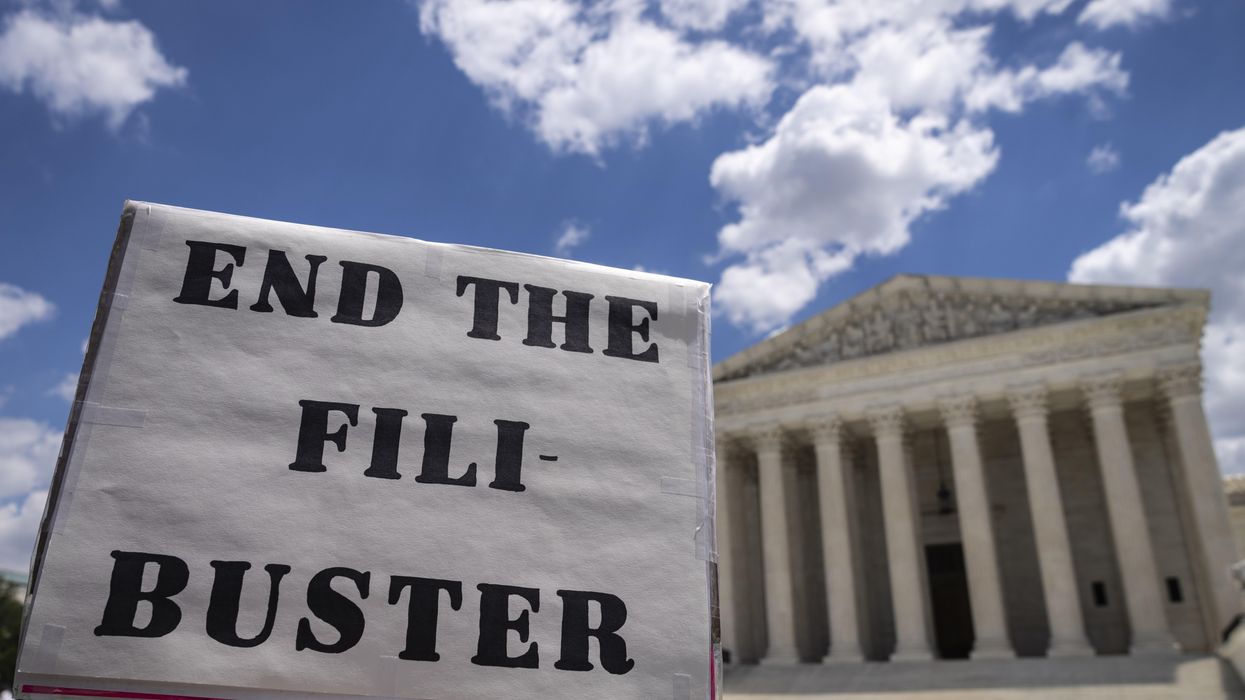Blockwood is executive vice president of the Partnership for Public Service, adjunct professor at Syracuse University’s Maxwell School of Citizenship and Public Affairs, and a fellow of the National Academy of Public Administration.
We are seeing increasing debate, court rulings and newly introduced legislation regarding the federal government’s responsibility to enforce immigration law. It is clear that to resolve swelling immigration issues, the White House, Congress and the states need to provide bipartisan commitment and leadership.
“Do not come.” Those are the words Vice President Kamala Harris said three years ago – clear, direct and delivered with underlying compassion to many would-be illegal immigrants along the southern border. Yet, these words have not been heeded, as if not said at all, with migrant arrivals and violent encounters with our border protection authorities rising to all-time highs. For many, this is not their maiden voyage, seriously signaling we are in deep water.
Migration, the movement of people from one country to another, shouldn’t be controversial. And, if managed appropriately it shouldn’t lead to a national crisis. In fact, immigration has long been a cherished part of shaping who we are as a nation. We are a nation founded on, and advanced by, a society of immigrants, who make up approximately 13 percent of the United States — home to more immigrants than any other country in the world.
The United States welcomes over a million people a year and naturalized almost 8 million in the last decade. But, roughly 10.5 million immigrants are unauthorized, and there is growing concern that this group doesn’t respect American traditions and customs, drains resources and services intended for citizens, takes jobs away from hard-working Americans, commits more crime and atrocities than those who were born here, present intelligence threats to our national security, and is part of a larger, sinister replacement theory.
Though not without flaws and hardship, by all accounts, we are a blessed nation with a strong-held belief to care for those unable to care for themselves. America represents a bastion of freedom and opportunity, but how can we sustain the American allure of promise, protect our people, and combat an open border, so we don’t lose the country we love?
Recognize our reach
The U.S. doesn’t receive nearly enough credit for the work it does overseas. We obligated more than $70 billion in foreign aid to more than 150 countries to primarily support economic development, humanitarian assistance, peace related activities and health. This is a substantial sum to spend abroad while nearly 40 million Americans struggle with poverty and our southern border has us over a barrel.
No, it’s not a competition to measure which country is the most generous, but recognition of our assistance to other nations would surely help alleviate the concern that America may not be living up to its humanitarian ethos or meeting its moral obligation.
Run a tight ship
Laws exist for a reason. The Department of Homeland Security, through component organizations — such as Customs and Border Protection, Immigration and Customs Enforcement, and U.S. Citizenship and Immigration Services — plays an important role in keeping us safe and securing our border. We have an established visa application process, though perhaps in need of reform, to legally enter the United States, and we should reward those who use it rather than help those who undermine it.
We’re not a lawless nation. We must enforce our laws and hold accountable our government leaders who are failing or unwilling to do so. Our president and federal entities must address the rising immigration tsunami or expect that individual states or citizens will — potentially leading to infighting over federal and state rights and power.
Use an ‘all hands on deck’ approach
President Joe Biden said he would sign into law the “toughest and fairest” border reforms, recognizing we have an overwhelmed border amidst a crisis. Despite this pronouncement, the number of migrants illegally crossing continues to grow — in some cases by the thousands — every day. More (a whole of government approach) must be done to secure our border.
Let’s champion bipartisan efforts without fear of being labeled xenophobic or appearing to cede ground to one’s political base. Let’s unbundle unrelated issues in legislative proposals. Let’s not miss the opportunity for actual, meaningful reform because of bitterness, a partisan grudge or chance to show one side has been wrong on this issue all along.
It’s time to take a different tack and make way. Congress and the White House must work constructively to fund border security and immigration activities. We must lift any legislative or executive order restrictions, whether rationalized or real, regarding immigration enforcement. Limit and increase scrutiny for asylum seekers to thwart abuse of the system. Stop the antics of moving migrants around our country, which only shifts the problem elsewhere. Fund and equip law enforcement officials who are on board and ready to safeguard our national boundaries. Reinforce the border using traditional barriers coupled with advanced technology. Position the right leadership at agency, administration and state levels — leaders committed to solving the immigration issues battering our border.
Our country can and should offer legal pathways to citizenship, we can and should enforce our laws and impose consequences to those who try to circumvent them, and we can and should reinforce our commitment to keep U.S. citizens and communities safe. We must also safeguard our traditions while embracing our diversity as a nation — which together are what makes us strongest.
To help stem the tidal wave, let’s call for other nations to meet their responsibilities while we continue to be a role model by offering aid and technical assistance — but not at an unfair expense to Americans. Let’s use currently existing authorities to secure our border and pass additional bipartisan immigration legislation. We would be serving ourselves and our neighbors (adjacent and afar) well — providing the ballast we need, honoring America’s founding spirit, and protecting the American dream and the futures of our fellow countrymen.




















